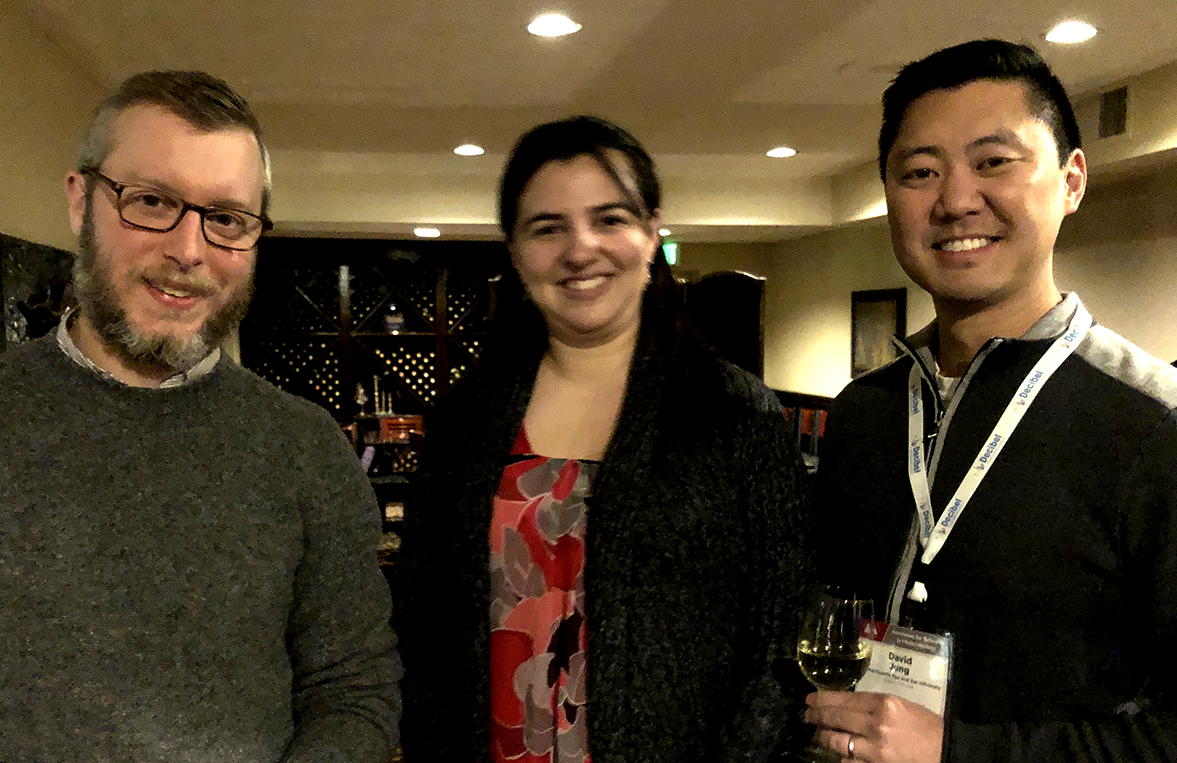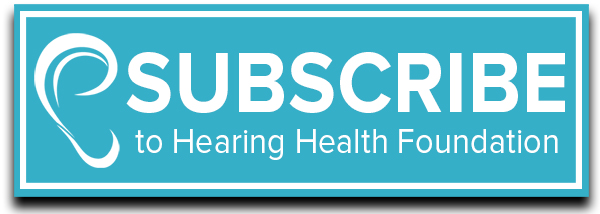By Lauren McGrath
Each February, thousands of hearing and balance scientists join their colleagues from around the world at the Association for Research in Otolaryngology (ARO) Mid-Winter Meeting. It is one of the premier international conferences for those in the field. I was fortunate to attend this year’s 42nd meeting, held in Baltimore, on behalf of Hearing Health Foundation (HHF), along with Emerging Research Grants (ERG) awardees past and present, Hearing Restoration Project (HRP) consortium scientists, and HHF scientific committee members—all of whom are integral to our mission to advance the prevention, treatment, and cures of hearing and balance conditions.
ARO provides auditory and vestibular researchers opportunities present their latest findings and engage in meaningful conversations with one another. If one scientist presents an idea to an audience of 100 scientists, she’s just created the possibility for 100 new ideas will form. Even one novel suggestion following a presentation at ARO can be invaluable to science.
Tenzin Ngodup, Ph.D., represents his HHF-funded tinnitus project at ARO.
One forum through which scientists share their knowledge at ARO is in the poster hall. ERG grantees including Tenzin Ngodup, Ph.D., and Samira Anderson, Au.D. Ph.D., stood proudly alongside large poster board displays ready to answer questions about their respective projects. Ngodup, who is currently funded by HHF and based at Oregon Health and Science University, used his poster to visually explain his progress investigating neuronal activity in the ventral cochlear nucleus (VCN) in order to prevent and treat tinnitus. “It was previously thought that there were a few hundred inhibitory glycinergic cells called D-stellate cells in the VCN, but we found a surprisingly large population of glycinergic cells— approximately 2,700—that are physiologically and morphologically distinct from D-stellate cells,” Ngodup says. By quantifying inhibitory neurons in the VCN he aims to examine inhibition in typical vs. tinnitus models, especially after noise exposure.
University of Maryland’s Anderson, a 2014 ERG grantee, represented an impressive half dozen informational poster boards with her colleagues. The titles included: “Aging Effects on the Auditory Evoked Cortical Potentials in Cochlear Implant Users”; “Mutual Information Analysis of Neural Representations of Speech in Noise in the Aging Midbrain”; and “Age-Related Degradation Is More Evident for Speech Stimuli With Longer Than With Shorter Consonant Transitions.” A clinician who transitioned to research, Anderson graciously thanked HHF for funding her first-ever scientific grant, and was thrilled to tell me her work had just been cited by the Wall Street Journal in an article called “Better Hearing Can Lead to Better Thinking,” published February 6, 2019, about the importance of hearing loss treatment in older adults.
Outside of the poster sessions in lecture halls, ARO attendees conduct topic-specific seminars to seated audiences. Elizabeth McCullagh, Ph.D., of University of Colorado Denver, a 2016 ERG grantee, led a symposium called “Mechanisms of Auditory Hypersensitivity in Fragile X Syndrome” in which she and other speakers, including Kelly Radziwon, Ph.D. (2017 ERG), and Khaleel Razak, Ph.D. (2018 ERG), presented their novel findings related to Fragile X syndrome: a genetic model for autism, difficulties in sound localization, and overstimulation by sound in mouse models.
2018 ERG grantees Joseph Toscano, Ph.D., A. Catalina Vélez-Ortega, Ph.D., and David Jung, M.D., Ph.D.
Achim Klug, Ph.D., a volunteer ERG grant reviewer, remarked during the Council of Scientific Trustees (CST) reception—a gathering to formally honor our ERG 2018 grantees—how critical McCullagh’s ERG grant has been to her work as an early-career scientist. With seed funding from HHF, McCullagh was able to investigate and publish information about a previously underfunded topic and deepen understanding within the hearing research field, he said. Allen Ryan, Ph.D., another member of the CST, added the program is “immensely valuable for helping young scientists advance to receive a Research Project Grant [R01] from the National Institutes of Health.” Every dollar invested in ERG grantees yields $91 from the NIH.
The HRP consortium also convened at ARO to deliver updates on five active projects following their most recent Seattle meeting. Bioinformatics and epigenetics were major focal points with Ronna Hertzano, M.D., Ph.D., showcasing updates to the gEAR database that she created (“Gene Expression Analysis Resource”) and Neil Segil, Ph.D., reporting on gene changes in the mouse inner ear, a project he works on with fellow HRP scientists Michael Lovett, Ph.D., David Raible, Ph.D., and Jennifer Stone, Ph.D.
Stefan Heller, Ph.D., who spoke about his Stanford lab’s work on transcriptome changes in single chick cells, noted: "The investments in the HRP are truly paying off, especially in the last one to two years. HRP investigators had major papers published and obtained National Institutes of Health support with the help of funding for the HRP consortium. Regarding my laboratory’s work, HRP support has given us the chance to focus on getting the highest possible quality of data—in my mind, the most important foundation for future work."
HHF looks forward to work to come from Ngodup, Anderson, McCullagh, and other ERG grantees, as well as the collaborative efforts of the HRP to advance a biological cure for hearing loss. We sincerely thank our generous donors and supporters who make this life-changing work possible.
Receive updates on life-changing hearing research and resources by subscribing to HHF's free quarterly magazine and e-newsletter.




